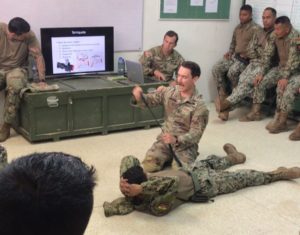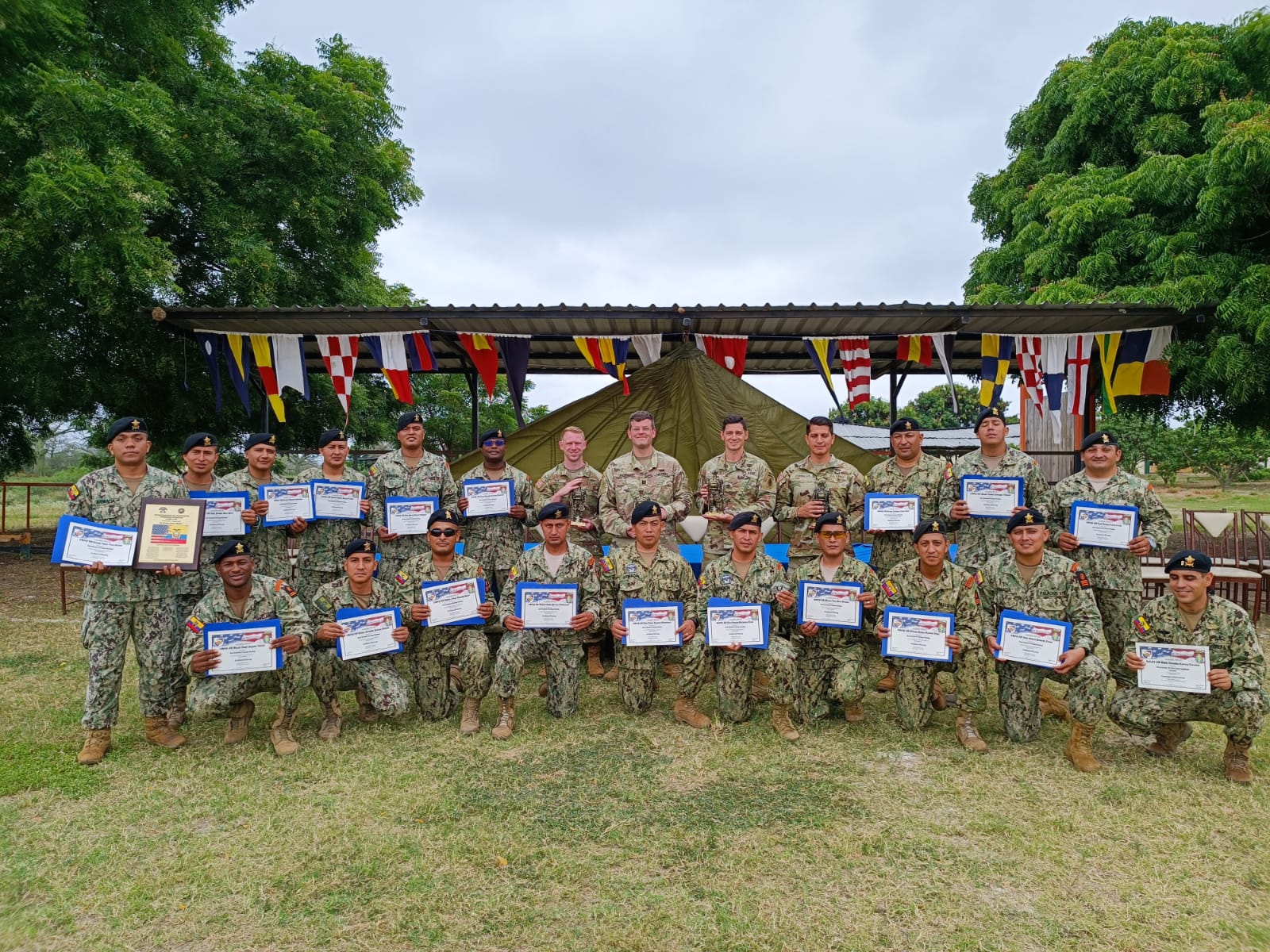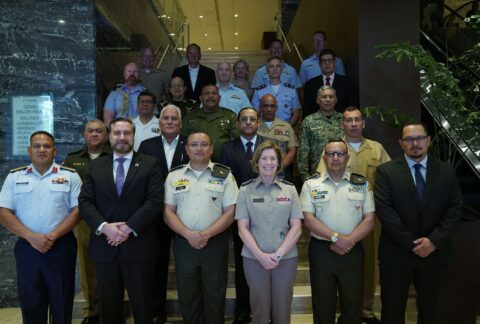Members of the Ecuadorian Navy’s Marine Infantry Battalion and the U.S. Army conducted joint training, April 17-25, in the port of Manta, Manabí province, to respond to natural disasters and emerging crises.
Through the combined Civil Affairs and Special Forces training, service members exchanged knowledge on first aid, disaster response, planning and military training, such as maneuvers with explosives and helicopters, inflatable boat launches and beach invasions, Ecuadorian Navy Lieutenant Jorge La Mota Reina, commander of the Jaramillo Special Operations Battalion, told Diálogo.
The Civil Affairs training took place April 17-May 13, while the Special Forces training began April 25 and concluded May 25, with the participation of 65 marines and four officers. Troops also used helicopters and airplanes in the training, theU.S.Embassy in Quito said via Twitter.

Thanks to “the ties of friendship” between both countries, the armed forces can “update the tactics and techniques that the U.S. Army personnel are teaching us; this is reflected in the tasks of protection and security of the civilian population that may be affected by possible natural disasters,” Lt. La Mota said. “What we’ve learned will be replicated to the rest of the service members.”
Exposed territory
Ecuador is at high risk of disasters due to its topography and climatic conditions. Earthquakes, floods, volcanic eruptions, forest fires, and droughts relatively often plague the country and often with great force, says the Canadian nongovernmental organization Latin American Security and Defense Network.
These natural phenomena cause significant loss of human lives and have serious effects on the economy, as happened with the earthquake that shook Ecuador in 2016, the World Bank indicated on its site. Climate change is likely to increase inclement weather in Ecuador.
“The Armed Forces played a fundamental role in helping the population in this [2016] catastrophe. With our personnel and our logistics, we were able to help a lot,” Lt. La Mota said. “This forces us to be more trained. Both nationally and globally this [climate change] is something to always keep in mind.”
For instance, on January 31, a landslide hit Quito, the Ecuadorian capital. The landslide left more than 28 people dead and at least 52 people injured, affected 555 people, and damaged 48 homes, Ecuador’s National Risk and Emergency Management Service reported.
Immediately following the disaster, more than 600 members of the Armed Forces began search and clean-up tasks at ground zero, located in the sector of La Comuna. The Army with its equipment removed debris in the area, the Ecuadorian Army said in a statement.
Between 2017 and 2020, 1,461 floods, 11,336 forest fires, 4,157 landslides, and 113 volcanic activities occurred, reported Ecuadorian newspaper Primicias.
“The main capacity of the Armed Forces of Ecuador to fulfill the assigned missions at the time of crisis is mobility,” Lt. La Mota said. “We can move to any part of the country to help where any natural disaster occurs, without the need for basic services or a good road.”
Island region
To strengthen relations and cooperation between both countries, the Ecuadorian Navy received May 10-11 in the Insular region (Galápagos Islands), the visit of the U.S. Coast Guard Cutter Northland.
“Among the activities carried out in conjunction with Coast Guard Cutter San Cristóbal, a combined exercise was developed in the area of the Insular EEZ [Exclusive Economic Zone] aimed at neutralizing illicit activities,” the Ecuadorian Navy said. “The USCGC Northland also executed a presentation, detailing operations and activities focused on safeguarding human life at sea, neutralizing illicit activities, and preserving the marine-coastal environment.”
To address the challenges and opportunities, “we as a country or as a military hope that the United States will continue to provide us with this type of training. We hope to be able to continue this close relationship. This cooperation allows us to stay up to date,” Lt. La Mota concluded.









